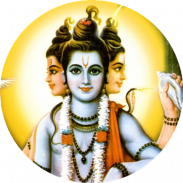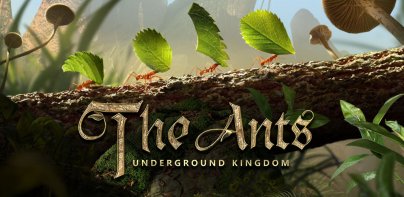




Digambara Digambara Shripad दिगम्बरा दिगम्बरा जप

Beschreibung von Digambara Digambara Shripad दिगम्बरा दिगम्बरा जप
Shri Dattatreya | PLAY OFFLINE | HD Audio | Repeat Option | FREE| HD Images
Dattatreya or Dattā is a paradigmatic Sannyasi (monk) and one of the lords of Yoga in Hinduism.[1] In many regions of India and Nepal, he is considered a deity. In Maharashtra, he is a syncretistic deity, considered to be an avatar (incarnation) of the three Hindu gods Brahma, Vishnu, and Shiva, collectively known as Trimurti.[2] In other regions, and some versions of texts such as the Garuda Purana, Brahma Purana and Sattvata Samhita, he is an avatar of Vishnu.[3]
His iconography varies regionally. In western Maharashtra, for example, he is typically shown with three heads and six hands, one head each for Brahma, Vishnu and Shiva, and one pair of hand holding the symbolic items associated with each of these gods: rosary and water pot of Brahma, conch and wheel of Visnu, trident and drum of Shiva.[2] He is typically dressed as a simple monk or almost naked, situated in a forest or wilderness suggestive of his renunciation of worldly goods and pursuit of a meditative yogi lifestyle. In paintings and some large carvings, he is surrounded by four dogs and a cow, which is a symbolism for the four Vedas and mother earth that nourishes all living beings.[2][4] In the temples of southern Maharashtra, Varanasi and in the Himalayas, his iconography shows him with one head and two hands with four dogs and a cow.
According to Rigopoulos, in the Nath tradition of Shaivism, Dattatreya is revered as the Adi-Guru (First Teacher) of the Adinath Sampradaya of the Nathas, the first "Lord of Yoga" with mastery of Tantra (techniques). His pursuit of simple life, kindness to all, sharing of his knowledge and the meaning of life during his travels is reverentially mentioned in the poems by Tukaram, a saint-poet of the Bhakti movement. Over time, Dattatreya has inspired many monastic movements in Shaivism, Vaishnavism and Shaktism, particularly in the Deccan region of India, south India, Gujarat, Rajasthan and Himalayan regions where Shiva tradition has been strong. According to Mallinson, Dattatreya is not the traditional guru of the Nath sampradaya, he was coopted by the Nath tradition in about the 18th century as a guru, as a part of Vishnu-Shiva syncretism. This is evidenced by the Marathi text Navanathabhaktisara, states Mallinson, wherein there is syncretic fusion of the Nath Sampradaya with the Mahanubhav sect by identifying nine Naths with nine Narayanas.
Several Upanishads are dedicated to him, as are texts of the Advaita Vedanta-Yoga tradition in Hinduism. One of the most important texts of Advaita Vedanta, namely Avadhuta Gita (literally, "song of the free") is attributed to Dattatreya. In Maharashtra, an annual festival in the Hindu calendar month of Mārgaśīrṣa (November/December) reveres Dattatreya and this is called Datta Jayanti.
1008 names of Shri Dattatreya श्री दत्तात्रेय के १००८ नाम
Gurudev Chant for Peace गुरुदेव चांट फॉर शान्ति
Dattatrey Stotram दत्तात्रेय स्तोत्रम
108 names of Sri Dattatreya श्री दत्तात्रेय के १०८ नाम
Digambara Digambara Shripad Jap दिगम्बरा दिगम्बरा श्रीपद जप
Duttaguru Majhe Sadguru दत्तगुरु माझे सद्गुरु
Dhanya Dhanya Hov Dutta धन्य धन्य होव दत्ता
Aarti Gurudutt Avdhuta आरती गुरुदत्त अवधूता
Shree Datta Stavam श्री दत्ता स्तवं
Duttguruchi Aarti दत्तगुरुचि आरती
Karuna Tripadi करुणा त्रिपदी
Shri, shri du, shri Dutt, Datta, Dattatreya
Shri Dattatreya | PLAY OFFLINE | HD Audio | Wiederholen Sie Option | FREE | HD Images
Dattatreya oder Datta ist ein paradigma Sannyasi (Mönch) und einer der Herren von Yoga in Hinduism [1]. In vielen Regionen von Indien und Nepal, wird er eine Gottheit betrachtet. In Maharashtra, ist er eine synkretistische Gottheit, als ein Avatar (Inkarnation) der drei hinduistischen Götter Brahma, Vishnu und Shiva sein, gemeinsam bekannt als Trimurti. [2] In anderen Regionen, und einige Versionen von Texten wie der Garuda Purana, Brahma Purana und Sattvata Samhita, er ist ein Avatar von Vishnu. [3]
Seine Ikonographie variiert regional. In westlichen Maharashtra, zum Beispiel, wird er in der Regel mit drei Köpfen und sechs Händen gezeigt, einen Kopf jedem für Brahma, Vishnu und Shiva, und ein Paar Hand die symbolischen Elemente mit jedem dieser Göttern assoziiert halten: Rosenkranz und Wassertopf von Brahma , Muschel und das Rad Visnus, Trident und Trommel von Shiva. [2] Er wird in der Regel als einfacher Mönch oder fast nackt gekleidet, in einem Wald oder in der Wildnis suggestiven seinen Verzichts auf weltliche Güter und Verfolgung eines meditativen Yogis Lebensstils. In Gemälden und einigen großen Schnitzereien, wird er von vier Hunden und einer Kuh umgeben, die eine Symbolik für die vier Veden und Mutter Erde, die alle Lebewesen ernährt. [2] [4] In den Tempeln des südlichen Maharashtra, Varanasi und im Himalaya, seine Ikonographie zeigt ihn mit einem Kopf und zwei Händen mit vier Hunden und einer Kuh.
Nach Rigopoulos, in der Nath Tradition Shaivism wird Dattatreya als Adi-Guru (erster Lehrer) der Adinath Sampradaya der Nathas verehrt, der ersten "Lord of Yoga" mit Beherrschung des Tantra (Techniken). Sein Streben nach einfachen Leben, Freundlichkeit zu allen, die gemeinsame Nutzung von Wissen und den Sinn des Lebens während seiner Reisen ist ehrerbietig in den Gedichten von Tukaram erwähnt, ein Heiliger-Dichter der Bewegung Bhakti. Im Laufe der Zeit hat Dattatreya viele Klöster Bewegungen in Shaivism, Vaishnavism und Shaktismus inspiriert, vor allem im Deccan Region von Indien, Süd-Indien, Gujarat, Rajasthan und Himalaya-Regionen, in denen Shiva Tradition stark gewesen ist. Nach Mallinson, Dattatreya nicht der traditionellen Guru der Nath sampradaya ist, wurde er von der Nath Tradition in etwa dem 18. Jahrhundert als Guru, als ein Teil von Vishnu-Shiva Synkretismus kooptiert. Dies wird durch den Text Marathi Navanathabhaktisara belegt, besagt Mallinson, wobei es syncretic Fusion des Nath Sampradaya mit dem Mahanubhav sect von neun Naths mit neun Narayanas identifizieren.
Mehrere Upanishaden sind ihm gewidmet, wie Texte der Advaita Vedanta-Yoga Tradition im Hinduismus sind. Eines der wichtigsten Texte von Advaita Vedanta, nämlich Avadhuta Gita (wörtlich: „Lied der freien“) auf Dattatreya zugeschrieben. In Maharashtra, ein jährliches Festival in dem Hindu-Kalender Monat Mārgaśīrṣa (November / Dezember) reveres Dattatreya und dies wird Datta Jayanti genannt.
1008 Namen von Shri Dattatreya श्री दत्तात्रेय के 1008 नाम
Gurudev Chant for Peace गुरुदेव चांट फॉर शान्ति
Dattatreya Stotram दत्तात्रेय स्तोत्रम
108 Namen von Sri Dattatreya श्री दत्तात्रेय के 108 नाम
Digambara Digambara Shripad Jap दिगम्बरा दिगम्बरा श्रीपद जप
Duttaguru Majhe Sadguru दत्तगुरु माझे सद्गुरु
Dhanya Dhanya Hov Dutta धन्य धन्य होव दत्ता
Aarti Gurudutt Avdhuta आरती गुरुदत्त अवधूता
Shree Datta Stavam श्री दत्ता स्तवं
Duttguruchi Aarti दत्तगुरुचि आरती
Karuna Tripadi करुणा त्रिपदी
Shri Shri du, shri Dutt, Datta, Dattatreya


























